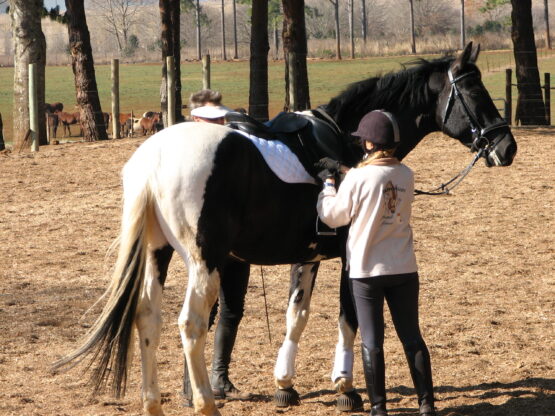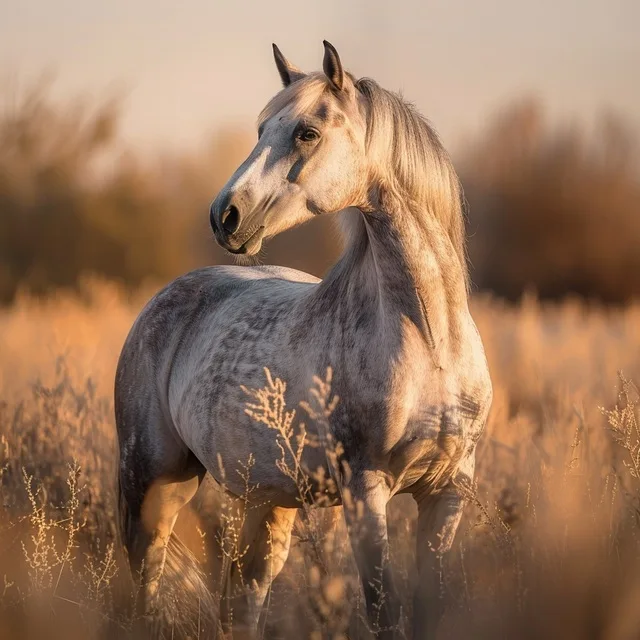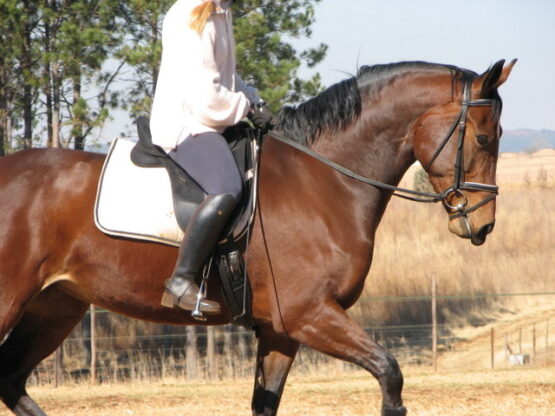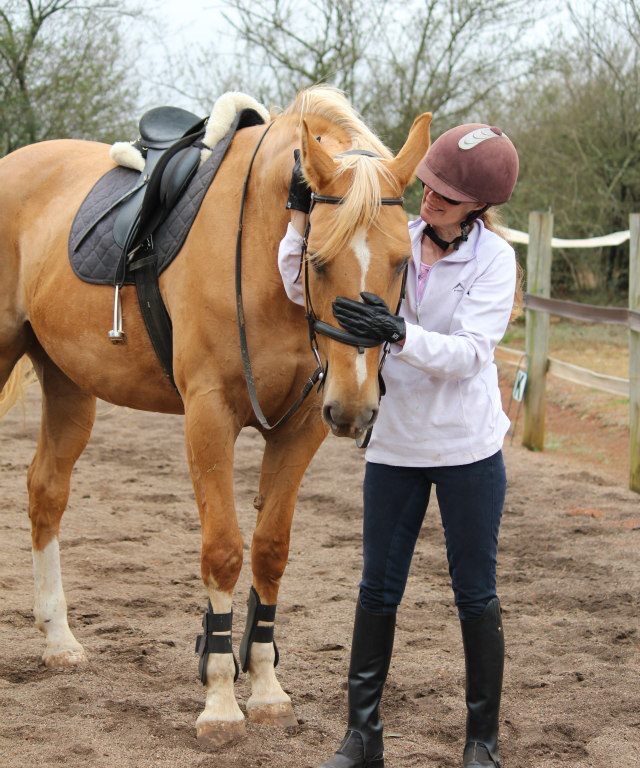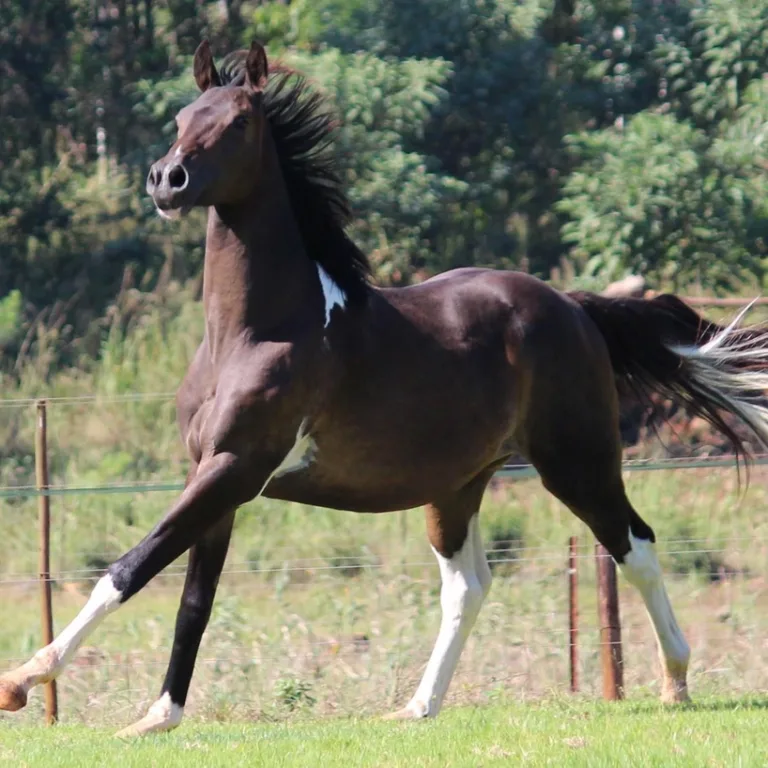Practical Strategies for Efficient Winter Riding: Tips and Tricks
Winter can be a challenging time for horse riders, with cold temperatures, snow, and ice making it difficult to enjoy riding as much as you might during the warmer months. Riding in winter can also pose risks to both you and your horse if proper precautions are not taken. However, with some careful planning and preparation, you can still enjoy horse riding throughout the winter season.
Whether you’re an experienced rider looking to continue riding during the colder months, or a beginner interested in learning more about winter riding, this post will offer some useful insights and practical advice to help you ride safely and comfortably in winter weather. By following these tips and strategies, you can make the most of winter riding and ensure that you and your horse stay healthy, happy, and comfortable during this chilly season.
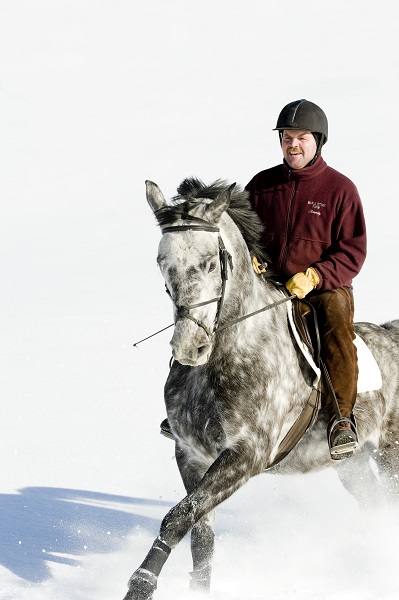
dressing for winter
When it comes to winter riding, dressing appropriately is crucial to staying warm, comfortable, and safe. The cold temperatures and potential for rain or snow mean that riders need to prepare for the elements. Here are some tips on how to dress for winter riding:
- Layering: Layering your clothing is key to staying warm while riding. Start with a base layer that wicks moisture away from your skin, then add a middle layer for insulation, and finish with an outer layer that is wind and waterproof.
- Insulated gloves: Hands are particularly vulnerable to the cold, so investing in a good pair of insulated gloves is essential for winter riding. Look for gloves that are warm, waterproof, and have good grip.
- Ear warmers: Keeping your ears warm is important for staying comfortable during a winter ride. Ear warmers or a warm hat that fits comfortably under your helmet are a good option.
- Warm and waterproof footwear: Your feet can get cold and wet quickly in winter weather, so choose footwear that is insulated and waterproof. Avoid bulky boots that might make it difficult to ride effectively.
- Additional accessories: Consider adding other accessories such as a scarf or neck warmer to protect your face from the cold, or a warm vest to add extra insulation.
By following these clothing tips, you’ll be able to stay warm and comfortable during your winter ride, and reduce the risk of hypothermia or other cold-related illnesses.
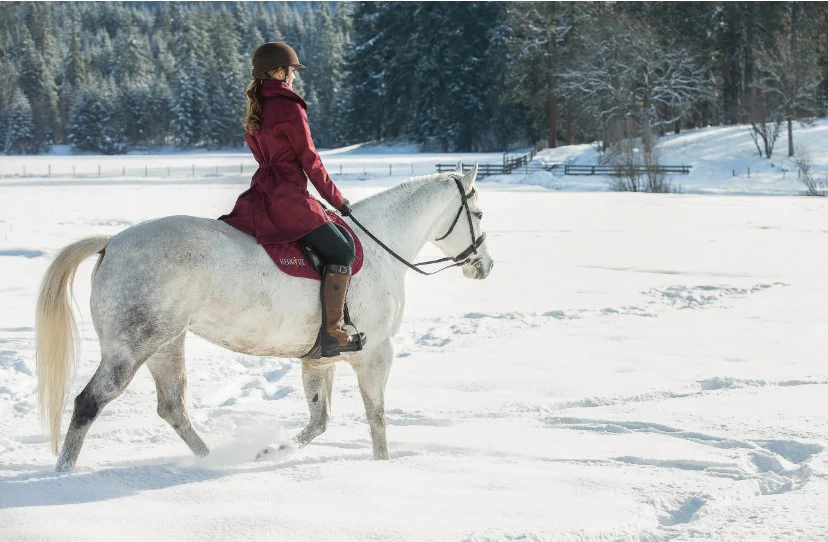
Preparing your horse
Winter weather can affect your horse in many ways, and as a responsible rider, it’s important to prepare your horse for cold and wet conditions. Here are some key considerations when preparing your horse for winter riding:
- Grooming: Regular grooming is important for keeping your horse’s coat healthy and clean, especially during winter. A clean coat allows your horse to regulate its body temperature more effectively, so make sure to remove any dirt or mud with a curry comb and brush.
- Conditioning: During the winter months, horses may not get as much exercise as they do during the summer, which can lead to reduced fitness levels. Make sure to keep up with regular exercise and conditioning to help maintain your horse’s fitness and health.
- Feeding: In colder weather, horses require more calories to maintain their body temperature. Consider increasing your horse’s feed intake, or providing additional hay or other high-fiber feeds to help keep them warm and healthy.
- Blanketing: Depending on the weather and your horse’s individual needs, you may need to use a blanket to keep them warm and comfortable. Make sure to choose a blanket that fits properly and is appropriate for the temperature and weather conditions.
- Foot care: Winter weather can make it difficult to maintain your horse’s hooves. Regular farrier visits and proper hoof care are important for keeping your horse comfortable and avoiding hoof-related issues.
While riding your horse it is very important to monitor your horse’s comfort level and take steps to keep them warm and safe. Make sure to warm up slowly and avoid overexerting your horse, and consider using leg wraps or boots to keep their legs warm and protected. By taking these steps to prepare your horse for winter riding, you can help ensure a safe and comfortable ride for both you and your equine companion.
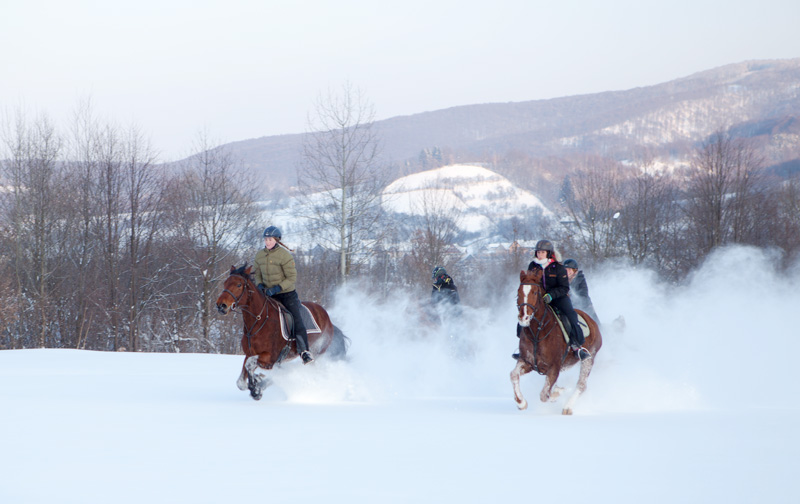
Techniques to stay safe when riding in winter
Winter weather can present unique challenges for riders, including slippery surfaces and reduced visibility. To ride safely and effectively during the winter months, it’s important to adapt your riding techniques to the conditions. Here are some key riding techniques to keep in mind:
- Maintain a steady pace: Riding at a steady pace can help you and your horse maintain balance on slippery or uneven surfaces. Avoid sudden changes in speed or direction that can throw your horse off balance.
- Avoid icy patches: Look out for icy patches on the trail, and steer clear of them if possible. If you do encounter ice, slow down and use your horse’s momentum to help them stay upright.
- Adapt to reduced visibility: Winter weather can reduce visibility, making it difficult to see potential hazards. Use extra caution in these conditions, and be prepared to adjust your pace or route if necessary.
- Handle frozen ground: Frozen ground can be hard and unforgiving, so make sure to give your horse plenty of warm-up time before starting your ride. Use caution when riding on frozen ground, as it can be slippery and cause your horse to slip or fall.
- Navigate snowdrifts: Snowdrifts can be difficult to navigate, but there are some techniques that can help. Consider riding in a zigzag pattern to distribute your horse’s weight more evenly, and use your legs to help guide your horse through the drifts.
- Deal with slippery surfaces: Riding on slippery surfaces can be challenging, but there are ways to handle it safely. Keep your weight centered over your horse’s center of gravity, and use your legs to help keep them balanced. Consider using traction aids such as studs or borium to improve your horse’s grip on slippery surfaces.
By using these techniques, you can help ensure a safe and enjoyable winter ride for both you and your horse.
Post-Riding Care
After a winter ride, it’s important to take care of both yourself and your horse. Here are some tips for proper post-riding care:
- Cool down and warm up properly: Even in cold weather, it’s important to properly cool down and warm up your horse before and after your ride. Take the time to walk your horse for at least 10-15 minutes to allow their heart rate to return to normal.
- Groom your horse: After your ride, make sure to groom your horse thoroughly to remove any sweat and dirt. This will help prevent skin irritation and keep your horse’s coat healthy.
- Check for injuries: Inspect your horse’s legs and hooves for any signs of injury, such as cuts, swelling, or lameness. Address any issues promptly to prevent them from worsening.
- Provide warmth and hydration: After your ride, make sure your horse has access to warm water and is blanketed appropriately to prevent them from getting chilled.
- Take care of yourself: Don’t forget to take care of yourself after your ride as well. Change out of wet or sweaty clothing as soon as possible to avoid getting chilled. Consider bringing a thermos of hot tea or soup to enjoy after your ride to warm up from the inside out.
- Prevent illness: In winter, horses can be more susceptible to respiratory illnesses such as pneumonia. Make sure your horse has access to clean, dry bedding and plenty of fresh air to prevent the buildup of harmful bacteria.
By taking these steps, you can help ensure that your horse stays healthy and happy throughout the winter riding season.
Conclusion
Winter riding can be challenging, but with the right preparation and techniques, it can also be incredibly rewarding. The main points to keep in mind for safe and enjoyable winter riding are:
- Dress appropriately for the weather, with warm and waterproof clothing and footwear.
- Prepare your horse for winter riding with proper grooming and conditioning.
- Use safe winter riding techniques, such as maintaining a steady pace and avoiding icy patches.
- Take care of yourself and your horse with proper post-riding care, including cooling down, grooming, and staying warm.
By following these tips and strategies, you can enjoy the beauty of winter riding while keeping yourself and your horse safe and healthy. Don’t let the colder months keep you from enjoying your passion for riding – embrace the season and make the most of it!
Further Reading
5 Tips for Winter Horseback Riding


Tips for Winter Riding in Snow and Ice — The deeper the snow, the harder your horse has to work with every stride. Balancing on slippery surfaces also demands more from your mount.

